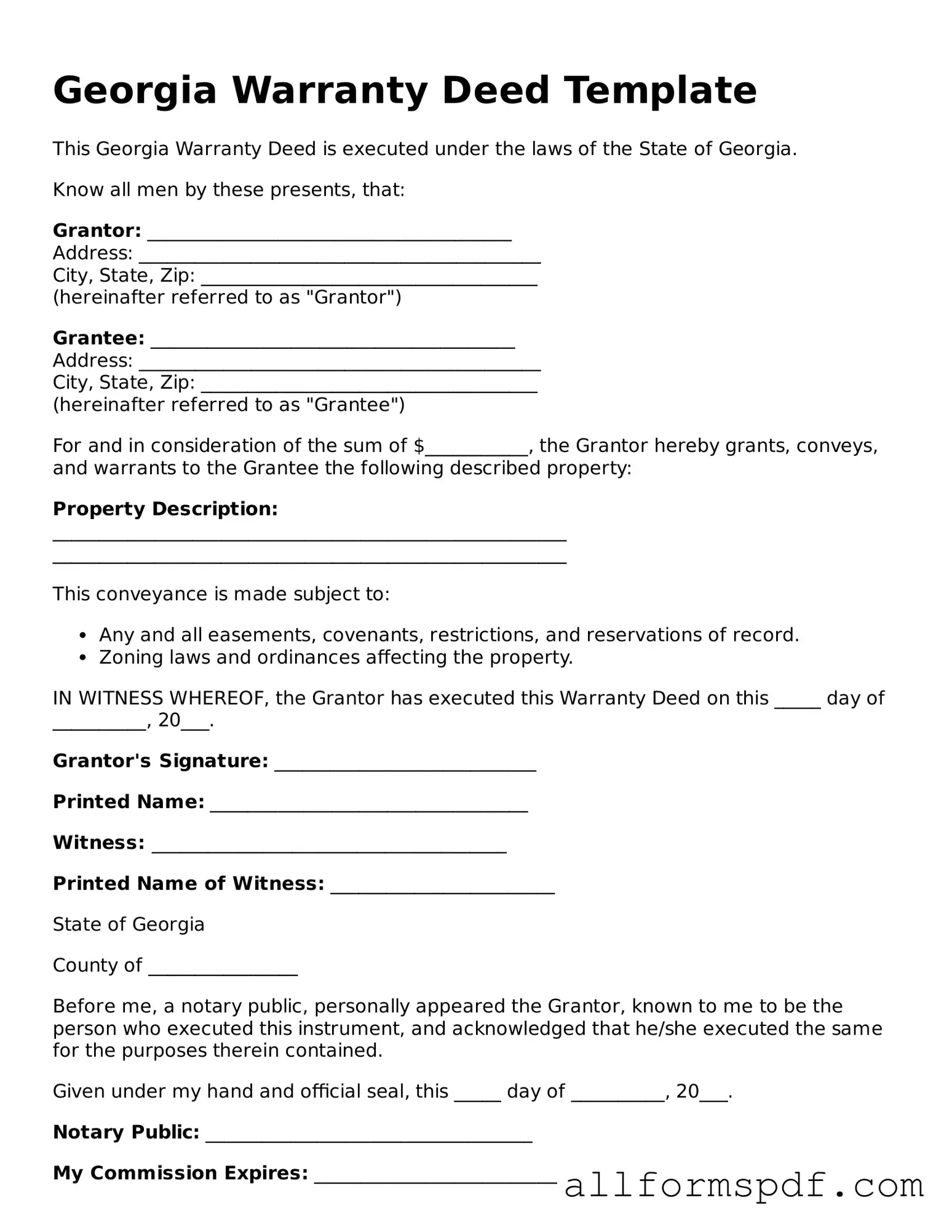Fillable Deed Form for Georgia
A Georgia Deed form is a legal document used to transfer ownership of real property in the state of Georgia. This form outlines the details of the transaction, including the parties involved and the property being transferred. Understanding the components and requirements of this form is essential for ensuring a smooth transfer process.
Create My Deed Now
